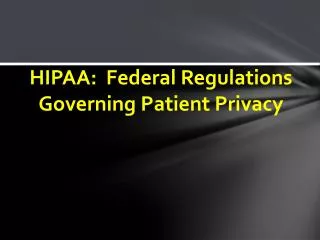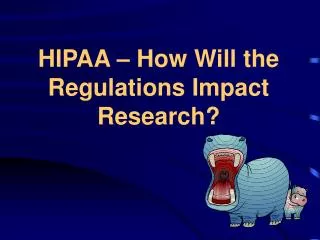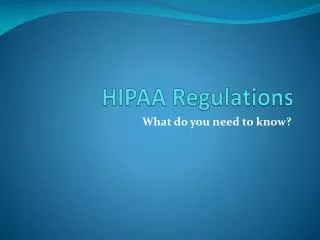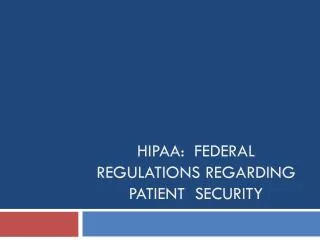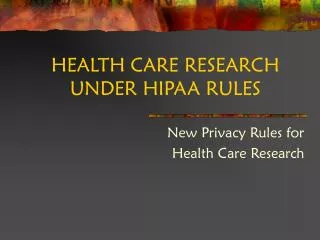Understanding De-Identification of PHI under HIPAA Regulations
141 likes | 158 Views
This session will review guidance from the HHS Office for Civil Rights (OCR) and from the National Institute of Standards and Technology (NIST) about how to properly de-identify health information. The various needs for de-identified information will be discussed and typical questions covered in the guidance will be discussed, in order to provide a sound, defensible basis for an organizationu2019s decisions and processes surrounding the de-identification of PHI. Register, https://conferencepanel.com/conference/hipaa-and-de-identification-of-phi-sometimes-required-never-easy
Download Presentation 

Understanding De-Identification of PHI under HIPAA Regulations
An Image/Link below is provided (as is) to download presentation
Download Policy: Content on the Website is provided to you AS IS for your information and personal use and may not be sold / licensed / shared on other websites without getting consent from its author.
Content is provided to you AS IS for your information and personal use only.
Download presentation by click this link.
While downloading, if for some reason you are not able to download a presentation, the publisher may have deleted the file from their server.
During download, if you can't get a presentation, the file might be deleted by the publisher.
E N D
Presentation Transcript
More Related





